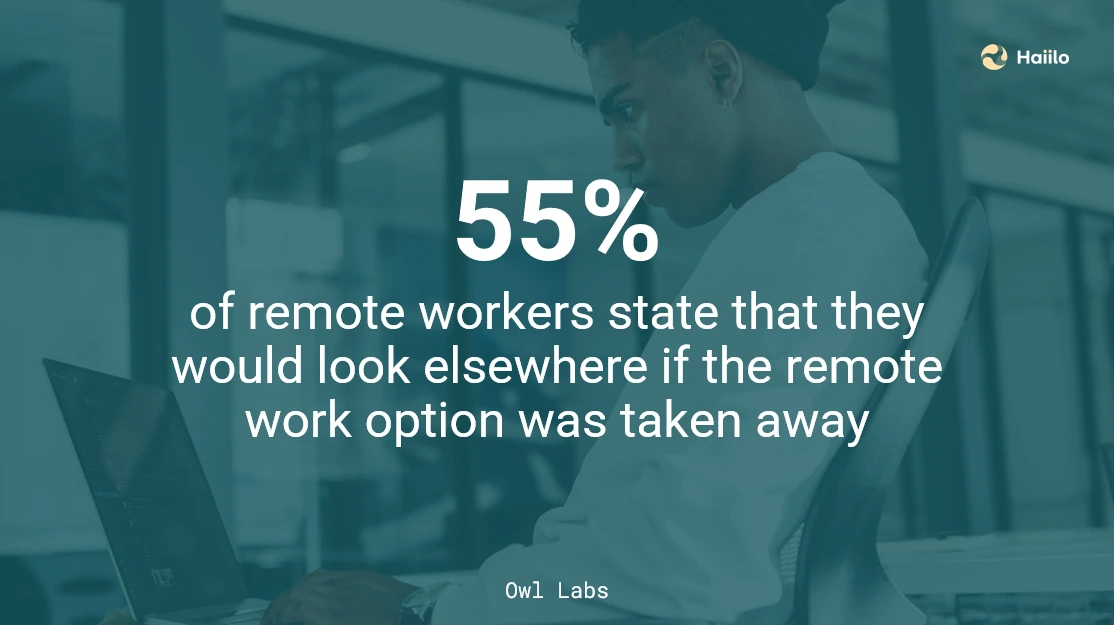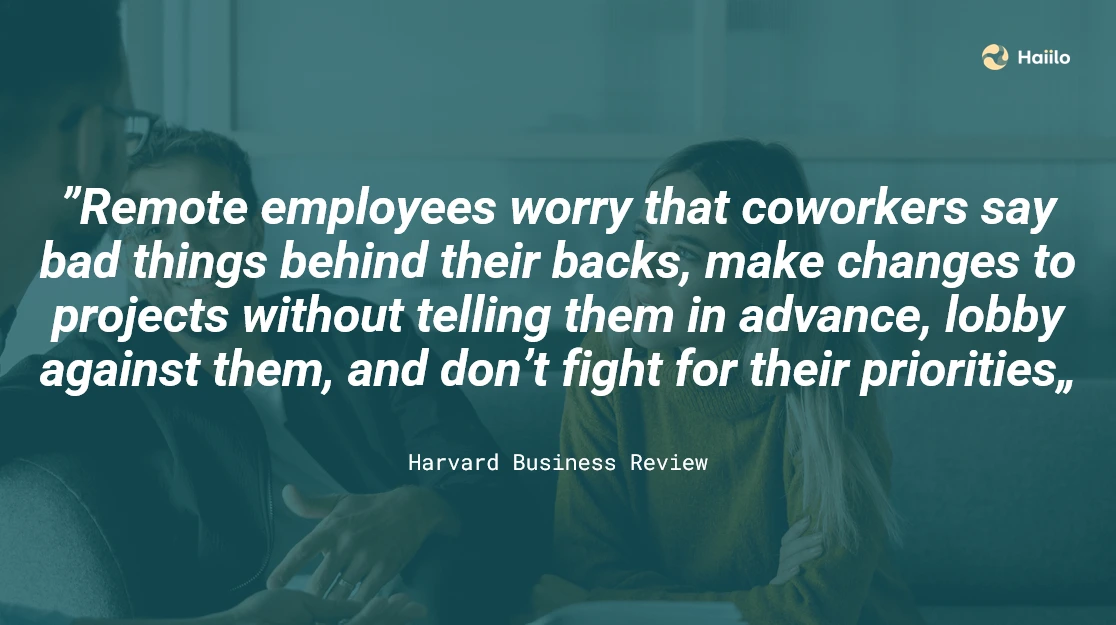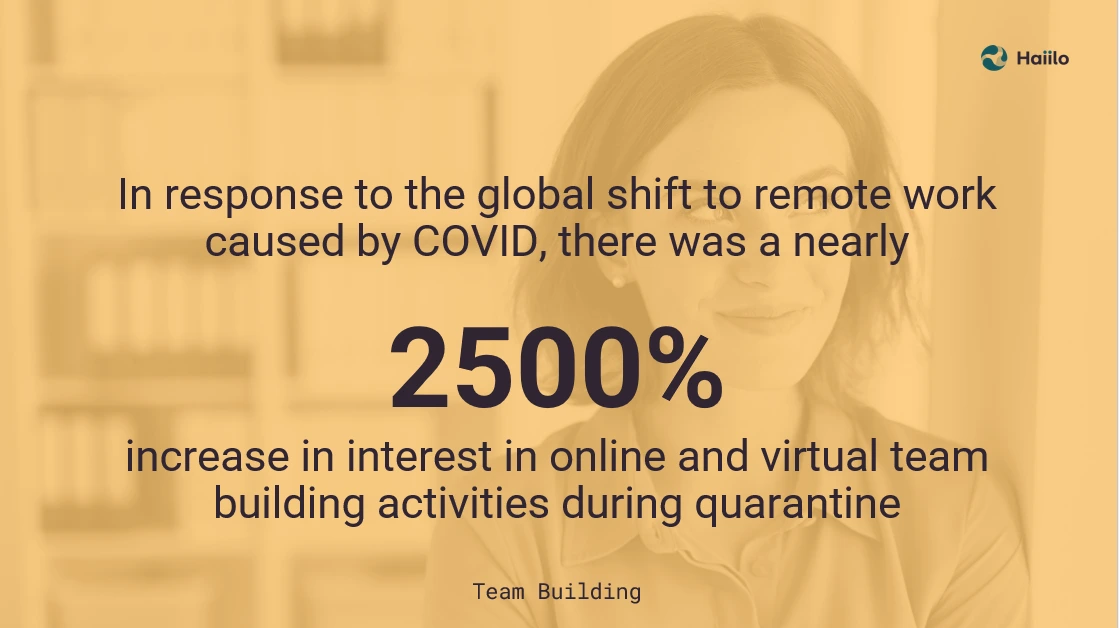How to enable hybrid and remote teams for success? Leaders, managers, and HR professionals worldwide have been looking for answers to this question during the previous two years.
By today, we have all learned that remote work is not just a short-term trend caused by COVID-19. Remote work is here to stay because many employees are not ready to give up the flexibility it offers. The fact that 90% of remote workers recommend remote work says it all!
In this blog, we will talk about the characteristics of successful remote teams and how to make them more engaged even when they are physically not together. Even though hybrid and remote work environments bring many benefits, they also bring challenges and bottlenecks.
What Are Some Characteristics of Remote Teams?
Remote work is not for everyone, and some certain characteristics and traits make remote teams more successful at their jobs and more attractive to employers.
The Gallup State of the American Workplace report suggests that remote teams feel a greater sense of belonging. They also communicate more frequently with their teams online. This is a crucial because proper workplace communication is the main prerequisite for successful remote and hybrid work.
Another desirable trait of remote teams is improved loyalty and employee retention. Moreover, this is one of the main reasons why most employers will keep remote work in the future.
According to Owl Labs’ 2019 State of Remote Work report, workers who operate remotely are more than 13% likely to stay in their role for around five years when compared to onsite workers. The same study also explains that 55% of remote workers would look elsewhere if the remote work option was taken away.
Even a study from 2016 from the University of Minnesota and MIT showed “higher levels of job satisfaction and reduced levels of burnout and psychological stress” among remote teams.
Great remote teams are also great team workers. With the increase of the importance of cross-functional team collaboration and shared OKRs, teamwork has become a must-have!
How to Drive Engagement Among Remote Teams
A 2020 IBM survey found that 61% of CEOs believe that “empowering remote workforce” is an important part of their organization’s strategy. This was the most common “important strategy”.
On the other hand, 95% of company executives still believe employees need to be in the office to maintain strong company culture.
So what can organizations do to leverage the positives of remote work and mitigate its negative sides?
Let’s take a look!
1. Educate employees about the best remote work practices
Since the start of the pandemic, many employers have introduced internal sessions and lessons about how to be more productive while working from home.
Most of them have created guides for asynchronous workplace communications and best practices for virtual meetings.
Some have introduced weekly or monthly #WFH newsletters, podcasts, and webinars to educate their remote teams and enable them to succeed.
To make your employees even more engaged, you can consider internal peer-to-peer knowledge sharing. Create a #WFH-tips channel and encourage everyone to share their experiences and participate in the conversation.
💡 Learn about who are knowledge workers and how to set them up for success!
2. Create a collaborative virtual working environment
Team collaboration and communication are the top concerns for remote teams. Yet, this is a prerequisite for making them more successful.
Hence, employers must understand the power of building intuitive, fun, and collaborative virtual working environments for every employee.
To do this, we depend on technology. Solutions such as employee engagement apps enable organizations to provide a better working experience to their remote teams.
💡Don’t miss out on our comprehensive employee experience guide!
3. Nurture the culture of open and honest communication
Keeping remote employees connected even when they are physically separated is crucial. Proper workplace communications have, therefore, become a new business imperative since the end of 2019.
Internal communications and HR professionals have become some of the most important strategic business partners responsible for defining and driving the right company values.
Still, HBR found that remote employees often feel left out and disconnected :
“Remote employees are more likely to report feeling that colleagues mistreat them and leave them out. Specifically, they worry that coworkers say bad things behind their backs, make changes to projects without telling them in advance, lobby against them, and don’t fight for their priorities”.
That’s the reason why proper, frequent, and transparent communication through the right channels is extremely important when it comes to communicating with remote teams.
4. Encourage employees’ share of voice and empower managers to make informed decisions
Listen to what employees have to say! One of the best ways to empower your remote teams and make them more engaged is by driving bottom-up feedback.
People want to be heard, and not being able to speak up is one of the main reasons for the lack of motivation in the workplace.
Within digital workplaces, there are 2 ways to encourage people to share their voices.
- Create channels and discussions on various topics where everyone can contribute and share their thoughts
- For more sensitive topics, create employee engagement surveys to measure the sentiment of your employees, get actionable insights for improvement, and make timely adjustments
These surveys are a great way for empowering managers to better understand their teams’ current state of mind, boost engagement, prevent turnover, and make timely decisions for improvements.
5. Make information easily accessible for every employee
Asynchronous communication forces companies to organize information better and make it easily accessible to every employee – on desktop and mobile devices.
Extensive search for information as well as information overload should be in the past. They can be the most significant cause of workplace frustrations and productivity loss.
Today, employees expect to get the right information at the right time.
Yet, according to a report on 2018 global workplace trends, there’s a major gap between the ease with which employees access data in their personal lives versus accessing valuable information from across the organization.
As nicely put in the same research,
“the consumer-grade technology experience employees are expecting at work is impeded by critical information being hard to access and nearly impossible to process. This is due in part to factors such as information silos, restricted permissions, and lack of centralized and updated content”.
6. Organize virtual team buildings
In response to the global shift to remote work caused by COVID, there was a nearly 2500% increase in interest in online and virtual team building activities during quarantine.
The purpose of team building is to foster a sense of belongingness which directly impacts employee motivation and retention. The fact that your remote teams can’t meet in person doesn’t mean that you shouldn’t find ways to help them connect. Even if your team is 100% remote, they can still interact with each other and feel less alone through virtual team-building activities.
💡Your corporate culture plays a big role in motivating remote teams and driving collaboration in the workplace. Check out our guide for building a great corporate culture!
7. Consider implementing a well-being program
Even though remote work offers many benefits, there are also some serious negative sides to it. Some remote teams and individuals are unable to unplug after work which is the main reason for burnout.
According to research, 39% of employee burnout comes from work overload. This burnout, as well as social isolation, are the main two reasons why many companies have started implementing employee wellbeing programs to show support to their remote teams.
8. Leverage the power of technology
According to research, employees now spend about 50% more time engaged in collaborative work. Today, this collaboration mostly happens via digital workplace solutions.
This technology, however, can make or break our employees’ happiness and success at work!
A study of more than 1,500 knowledge workers found that employees dissatisfied with their technology offerings and tools are twice as likely to say they are burned out, and half as likely to say they’re generally happy with their work. They view their employers as responsible for providing the right technology they need to do their jobs.
In the sea of various tech solutions available on the market, it can be hard for employers to understand which ones best fit their organizational needs.
The three most popular workplace tech categories organizations have been implementing since the emergence of COVID-19 are:
Are Remote Teams More Productive Than In-Office Employees?
This is a million-dollar question many employers are trying to answer. At the beginning of this pandemic, many companies thought remote work would never work.
However, there are already plenty of reports that proved them wrong.
- The Gallup State of the American Workplace report, shows us that engagement levels are higher for remote workers at 32% compared to office workers at 28%.
- The future of work report by Upwork found that 22.5% of survey managers said productivity had decreased compared to 32.2% of hiring managers that said productivity has increased since their employees started working from home in 2020.
- Their performance was boosted by 22% when employees were able to work from home, a study by Stanford found.
- Mercer, an HR and workplace benefits consulting firm, surveyed 800 employers. 94% of employers in research by Mercer stated that the work productivity was the same or higher since employees started working from home.
- 57% of tech employees surveyed during the pandemic by Trust Radius believe they are more productive when working remotely from home.
- According to PwC, only 17% of tech employees believe that they are less productive when working from home – more than 3x fewer people than those who believe they are more productive from home. Over half of adult professionals believe that the most significant benefit to remote work is increased productivity.
Building a Digital Workplace to Empower Your Remote Teams
According to an Alfresco survey, nearly 83% of professionals depend on technology to collaborate. 82% of the participants also felt they would feel impacted if this technology to collaborate was lost.
Hence, employers worldwide are tasked with a challenge to build more collaborative, intuitive, and secure digital workplaces for their remote teams.
Haiilo is an employee engagement platform with which companies build their unique culture through the stories of their employees and empower their workforce to be the best version of themselves – even remotely.
It enables organizations to create and publish engaging content at scale, reach every employee with real-time news and alerts, drive employee advocacy, and provide valuable insights so that managers can make timely and informed people-related decisions.
















